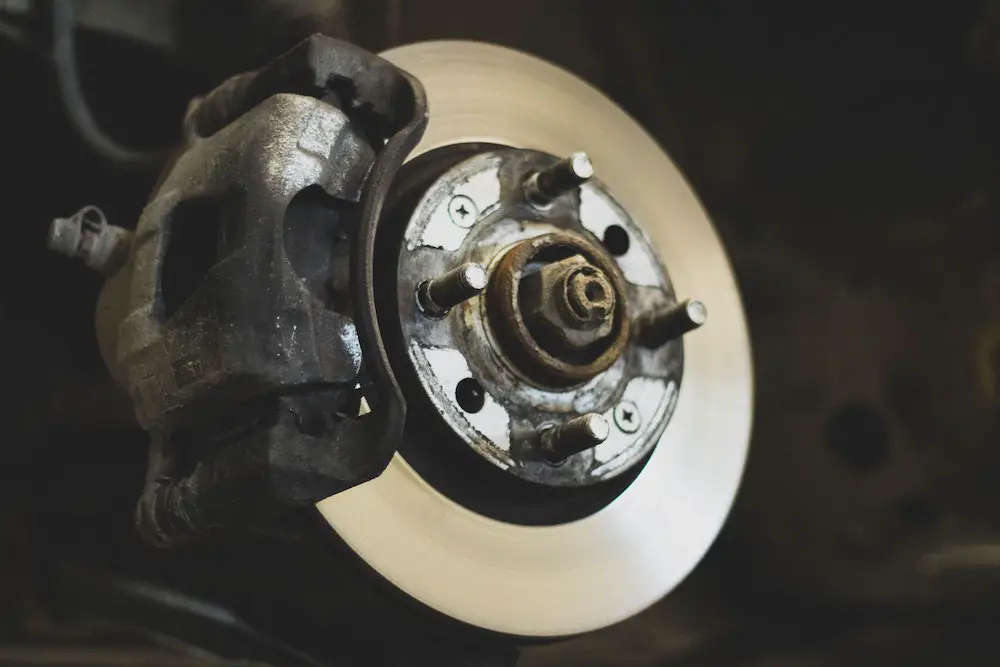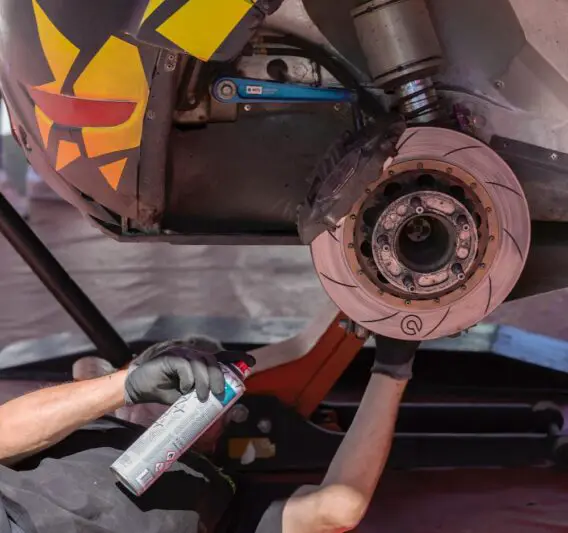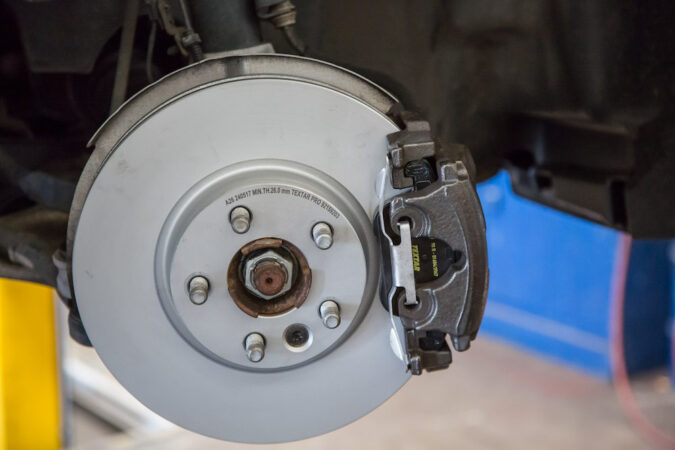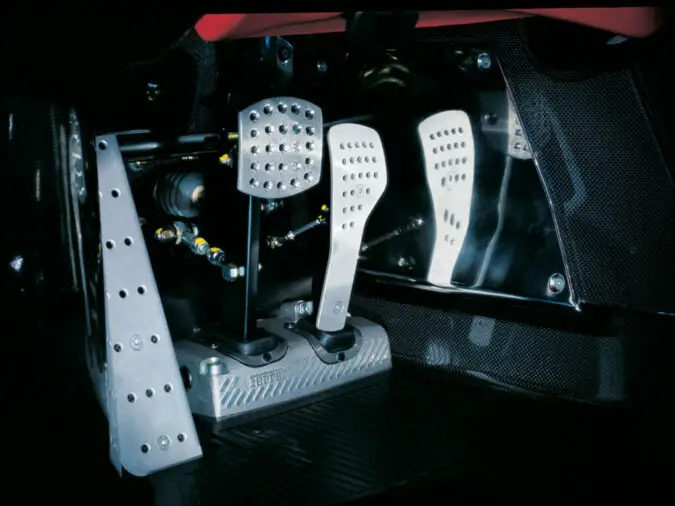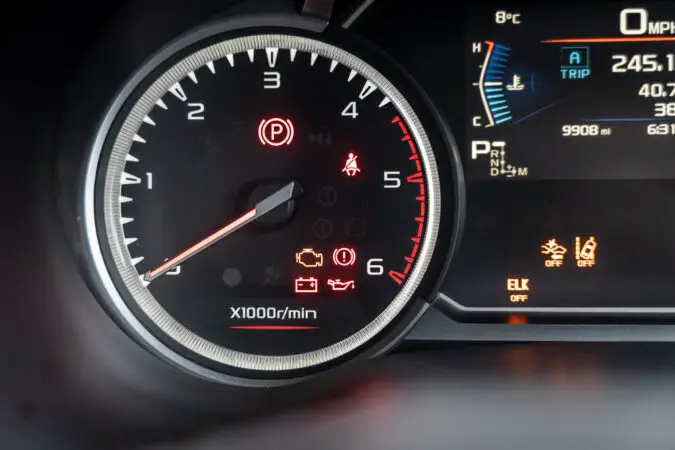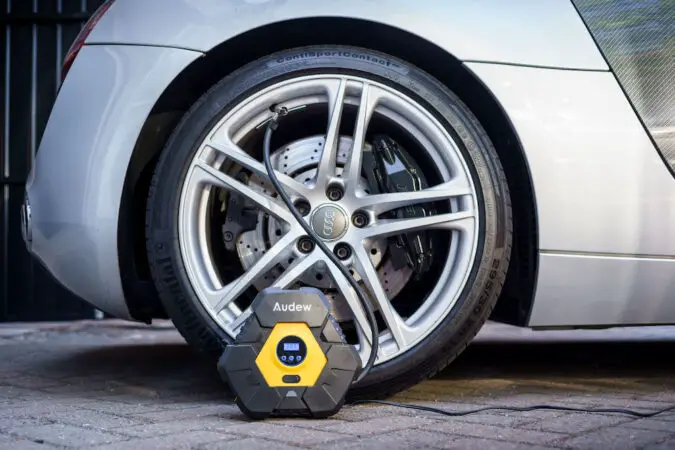Everybody loves a fast car. Everyone goes gaga over 0 to 60 times but seldom cares about 60 to 0 braking times, which is equally important. Bad brake booster symptoms matter a lot to these folks who want their machine to shed speed quicker than it picked up.
Bad brake booster symptoms show up if there are any problems with the brake booster, a key component of the braking system. But to understand bad brake booster symptoms, we will need to know what a brake booster does and the role it plays in the braking system of a car.
Bad brake booster symptoms are of many types. A lot of them can be detected by any driver. With the help of this guide here, you can decipher what each of these symptoms means. You will also be able to spot any issues with your brake booster before it turns critical.
Bad brake booster symptoms are important to understand as the brake booster plays an important role in providing the braking force. If it fails, it can be a colossal catastrophe, especially when the vehicle is doing highway speeds.
Without any further ado, let us wear our investigation cloaks and delve deep into the world of brake boosters and bad brake booster symptoms.
What Is A Brake Booster?
As we discussed, to understand bad brake booster symptoms, it is necessary to have a fair idea about the brake booster. This will also require an understanding of a car’s braking system in general. Armed with this knowledge, you will be prepared when bad brake booster symptoms pop up.
Imagine a vehicle that weighs one and a half tons doing 60 miles per hour on a highway. This fast-moving pile of metal, rubber, and plastic is a force to reckon with. Your braking system takes on the important and tough task of controlling the pace of this machine. It bites on, trying to grind this ton and a half torpedo to a halt using friction between brake pads and rotors.
This, in no way, is an easy task. The massive weight of the vehicle and the impressive speeds it can achieve make it especially difficult to stop. It will be a piece of cake for you to guess the amount of work a braking system does to stop your vehicle.
Now imagine, this force needed to stop the vehicle should come from your feet. Yes, the pressure you exert on the brake pedal translates to the brake pads. The brake pads use this force to grip onto the rotor and stop the vehicle.
Well, this extreme force needed to stop a car is grueling to create, for an average human. And this is where technology comes to your rescue in the form of a brake booster. And, this is where you understand the importance of knowing bad brake booster symptoms.
Role Of A Brake Booster
We have already established that it is difficult for a regular human being to create the immense braking force needed to stop a fast-moving car. The brake booster comes as an intermediate step between the driver and the braking system. The prime function of the brake booster is to amplify the braking force applied by the driver on the braking pedal.
After this, the brake booster sends the amplified force to the brakes which apply the same, and stop the vehicle. This ensures that parties at both ends receive what they need. The driver has to put way less effort on the pedal than he/she would have had to exert usually. The braking system, on the other hand, receives the required amount of braking pressure needed to stop the vehicle.
A brake booster is hence a middle link between the driver and the brakes. Failure of this system can imply that the driver will have to exert the full force needed to stop the vehicle. This may not be possible for many drivers hence the role it plays is very important. Bad brake booster symptoms announce the arrival of a possible failure, making it easy to spot an issue long before it happens.
A failure of the brake booster is not a happy scenario. Hence the bad brake booster symptoms announce to you what has gone wrong in your vehicle. But, before we dive into these details, let us look at how a brake booster works, and the different types of brake boosters available in our market.
Workings Of A Brake Booster
As we know, the primary function of a brake booster is to amplify the pressure applied to the brake pedal. But how does it achieve it? If we study in detail the operation of a brake booster, we can see that it is quite simple. But do not be fooled by the simplicity of the brake booster and ignore bad brake booster symptoms. A failure of the brake booster can make it hard to stop the vehicle.
The brake booster, unlike many other components of a car, is almost entirely mechanical. It uses a simple pushrod mechanism and a diaphragm to carry out its functions. Let us chop its operation down into bite-sized pieces for easy understanding. First, here is a list of the parts of the brake booster.
Parts Of Brake Booster
Here are the parts that a brake booster comes with.
1. Brake Pedal And Shaft
The brake booster gets its input from the brake pedal. The pressure applied by the driver is given to the brake booster via a pushrod mechanism. This shaft moves inside the brake booster as the driver pushes the brake pedal.
The shaft connects to the master cylinder mechanically. This means that even if the brake booster fails, the driver will still have mechanical brakes that will allow him/her to stop the car, albeit with way more effort.
2. Air Filter
The brake booster’s input comes with an air filter as well as a dust boot to prevent the entry of dust. This is important as the input side of the brake booster works at atmospheric pressure. Hence the ambient air should flow in and this should not carry any dust inside.
3. Poppet Valve
This valve is a key component in the working of a brake booster. The popper valve allows atmospheric air to flow into the pressure chamber when the driver presses the brake pedal. It also prevents the entry of the same ambient air when the driver is not applying the brakes. In this situation, it helps maintain the vacuum inside the pressure chamber.
4. Diaphragm
This is a large rubber element that allows the transfer of pressure from one side to another. It separates the pressure chamber and the brake booster chamber. It allows the atmospheric pressure in the pressure chamber to push on the vacuum-filled brake booster chamber.
The ability of the diaphragm to carry pressure to the other side is key to the working of the brake booster. The importance of the diaphragm will be clear once we discuss the working of a brake booster.
5. Vacuum Pipe
The brake booster works with a vacuum. The source of this vacuum can be different. In most vehicles, the vacuum is sourced from the engine’s intake manifold. A hose is routed from the manifold to the brake booster chamber to create this vacuum.
This is true in the case of gas-powered vehicles. But in most diesel vehicles, the intake manifold vacuum pressure is much lesser. This may not be enough to power the brake booster. In these vehicles, manufacturers fit a device called a brake booster vacuum pump which creates the required vacuum in the brake booster. This is especially important in the case of large, heavy diesel trucks.
6. Casing
Well, if the pressure difference is doing the job for you, you will need a strong airtight casing to hold it all in. That is exactly what the brake booster uses to contain all its machinery. The casing is a large disc-like container made of metal to brave the elements.
Now, with a clear understanding of the parts of the brake booster, let us peep into the working of the brake booster as well as the bad brake booster symptoms that hint at its failure.
7. Brake Master Cylinder
Okay, this is not a part of the brake booster. But to understand bad brake booster symptoms, it is necessary to understand the master cylinder. The master cylinder receives the amplified brake pressure from the brake booster. It has two pistons that utilize this pressure to supply brake fluid to the brakes on all wheels.
The brake master cylinder can be called the heart of the hydraulic braking system, as it handles the pumping of the brake fluid. It uses two pistons instead of one for added redundancy. So even if one fails, the driver will still have assisted brakes on at least two wheels. This will help her/him to bring the vehicle to a halt safely.
How Does A Brake Booster Work?
With the parts of a brake booster familiarized, let us have a look at how they all work together. This will give us a clear understanding of bad brake booster symptoms when we discuss about them.
A brake booster works to amplify pressure exerted on a brake pedal. It then carries this to the master cylinder which then supplies enough brake fluid through the lines. To understand how this all functions as a cohesive unit, let us start from the brake pedal.
The brake pedal is the only interaction point a driver will have with the braking system, an interface if you will. This is where all our legs are programmed to go if we encounter an obstacle that demands a stop or deceleration.
Steps Of Brake Booster Functioning
- Driver slams the brakes: This is the input from the driver that kick starts it all. The amount of pressure exerted on the brake pedal is directly proportional to how quickly the driver wants to stop the vehicle. The moment the brake pedal is pressed in, it pushes the shaft into the brake booster. The pedal is hinged to the shaft to facilitate this movement.
- Ambient air enters the pressure chamber: The inward movement of the shaft allows the entry of ambient air into the pressure chamber. This entry is regulated by the poppet valve. It is also managed by an air filter which prevents dust from getting in. The entry of ambient air creates an atmospheric pressure inside the pressure chamber.
- Vacuum build-up in the brake booster chamber: As atmospheric pressure builds up in the pressure chamber, a vacuum forms in the brake booster chamber. As we know, this vacuum is built via the vacuum tube that extends from the intake manifold of the engine.
- The diaphragm is pushed in: Now, we have a strong pressure difference between both chambers of the brake booster. The ambient air on one side undeniably has higher pressure compared to the vacuum in the opposite chamber. As these are separated by the flexible rubber diaphragm, the higher-pressure acts on it. This pushes the diaphragm towards the side which contains a vacuum. This pressure is used to amplify the pressure exerted on the brake pedal.
- The brake booster shaft moves pistons of the master cylinder: The amplified pressure is now carried by the shaft, which extends out of the brake booster. This is connected to the master cylinder which then distributes the brake fluid as required.
Bad Brake Booster Symptoms
Now, we know what a brake booster is and how it works. With this information up our sleeves, understanding bad brake booster symptoms is going to be a walk in the park.
Early detection of bad brake booster symptoms can also help evade an accident later on. Hence, it is essential to understand what they are and how they feel.
1. Hard Brake Pedal
If the brake booster’s primary function is to reduce the braking effort, failure of this can produce the opposite result. It is the most obvious of all the bad brake booster symptoms. A hard brake pedal means that your brake booster has failed and you will have to put extra effort to stop your vehicle.
This does not mean that your vehicle’s brakes have failed. Car brakes are designed to work mechanically if the booster fails. So, if these bad brake booster symptoms occur, keep calm, and use all your might to put pressure on the brake pedal to stop the vehicle safely.
2. Longer Stopping Distances
The bad brake booster symptoms also include reduced effectiveness of braking. Though this may not necessarily mean a faulty brake booster, it can be an indication. As the brake booster amplifies braking force, it reduces effort at the driver’s legs. The failure of the booster can mean that the driver will not get the same kind of brake bite he did when it was working well. This may give a perception of lower braking efficiency.
But there may be cases in which braking efficiency actually reduces. Instead of being one of the bad brake booster symptoms, it can be the symptom for several issues. Failure of anything from the master cylinder to the brake pads can mean a reduction in braking efficiency. If this happens, it is necessary to give your vehicle’s brakes a thorough check to make sure that it is all good to go.
3. Leaking Fluid
This is also one of the bad brake booster symptoms that may not directly point at a brake fluid leak. The brake booster does not deal directly with the brake fluid as the master cylinder reserves that responsibility. But a failed brake booster can also induce brake fluid leaks. The possibility of the leaks coming from the master cylinder is way more than that of the brake booster.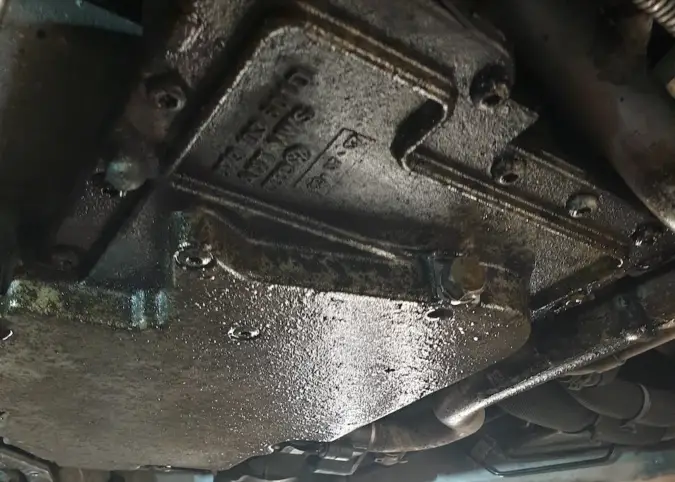
But no matter where it comes from, a brake fluid leak is to be dealt with care. Unlike the other bad brake booster symptoms which do not compromise braking efficiency, this will kill your brakes almost completely. Thus, it is a more dangerous hazard.
4. Hissing Noises
The brake booster works with a vacuum. But over time, the booster may develop leaks and grow more incapable of holding this vacuum in. In the list of all bad brake booster symptoms, there is a symptom that develops an aural warning signal. When the vacuum escapes, which is in fact, the ambient air rushing into the booster, a hissing sound arises from under the dashboard.
This hissing sound comes mostly when you press down on the brakes. This is a clear indication of a failed brake booster. This will also be accompanied by other bad brake booster symptoms, including a hard brake pedal and longer stopping distances.
5. Warning Lights
Modern vehicles come with a multitude of sensors to detect any issues or failures. The list of bad brake booster symptoms will remain incomplete if we do not mention the warning lights that these sensors trigger.
The most common warning light that acts like bad brake booster symptoms is the anti-lock braking system warning light. This may also be accompanied by traction control, an electronic stability program, or low brake fluid warnings. But these do not act like definite bad brake booster symptoms. Instead, they hint at possible failures in the braking system to which a bad brake booster is a contributor.
But if your ABS light pops up someday, you know how to glance at the brake booster.
6. Stalling Engine
This is not of the bad brake booster symptoms that point dead straight into a malfunctioning brake booster. An engine can stall due to several reasons. Fuelling issues, wrong timing, etc are just some of them. But if you experience your engine stalling while braking, it can be your brake booster failing.
The rubber-made diaphragm inside the brake booster can deteriorate over time. As the diaphragm provides a tight seal between the ambient air and the vacuum inside it, a leak can cause the air to rush into the vacuum. This excess air that bypasses the seal can sneak into the system and stall the engine.
Cost Of Repairing Bad Brake Booster Symptoms
Bad brake booster symptoms can get scary, especially when you are driving at highway speeds. Do you know what is equally scary as bad brake booster symptoms? The repair bill that comes along with bad brake booster symptoms.
A brake booster is a key component in a car hence replacing the same comes with a cost. The total cost of replacing a brake booster in a car can cost from $300 to $700, or even more, depending on the vehicle model.
The usual parts cost of a new brake booster can sit around $100 and $150 but it can go beyond $300 for some vehicles. The remaining parts cost for repairing bad brake booster symptoms comes from additional brake fluid. The replacement procedure can leak out the brake fluid, so you will have to replenish it. Add some $20 to $40 for the same.
Now comes the labor costs. It is not an easy task to replace a brake booster. This can range anywhere from $150 to $300 depending on how complex the job is. Add some more dollars for changing brake fluid and bleeding the brakes (or if you want to learn how to get air out of brake lines without bleeding).
Facts about Brake Boosters and Identifying Faulty Brake Booster Systems
- Brake boosters use engine vacuum and pressure to support the brake pedal with increased force on the master brake cylinder, allowing for quicker stops.
- Without a brake booster, you would need to push harder on the brakes to apply the same amount of pressure to the brake cylinder.
- There are several varieties of brake boosters, including vacuum pumps and hydraulic brake boosters.
- Vacuum brake boosters are the most common type and use the gas-powered engine’s vacuum to increase the pressure used on the brake pedal.
- Symptoms of a faulty brake booster can include a stiff brake pedal, high brake pedal position, increased braking distance, warning lights, fluid leakage, compromised engine function, and overheated hydro-booster.
- A vacuum pump is typically used in high-altitude locations where vehicles can’t produce enough vacuum for the brake booster.
- Hydraulic brake boosters use direct hydraulic pressure and rely on energy from the power steering pump.
- Electronic brake boosters housed with the master cylinder may develop leaks that affect their performance.
- If power steering is failing, the hydraulic brake boosters may eventually fail as well.
- Regular maintenance may not cover all brake booster issues, so drivers should be aware of common symptoms and have their brake boosters checked by a mechanic if necessary.
Bad Brake Booster Symptoms- A Threat Or Not?
Bad brake booster symptoms hint at an imminent issue that needs recognition. If you choose to ignore these signs, the results can be catastrophic. Though a failed booster will not affect the available braking bite, it will take a lot more effort from the driver to achieve the desired force. This can scare most drivers, especially new drivers if the vehicle is running at a high speed.
It is not ideal for anyone to ignore these bad brake booster symptoms. The most demanding symptom among them will be the brake fluid leak, which can completely take away your brakes. If you find any of these bad brake booster symptoms popping up, immediately seek help from your dealership and get the booster checked. Driving around with a faulty booster is not a wise thing to do. So, to answer the question at hand? Yes! Bad brake booster symptoms can be a threat.

